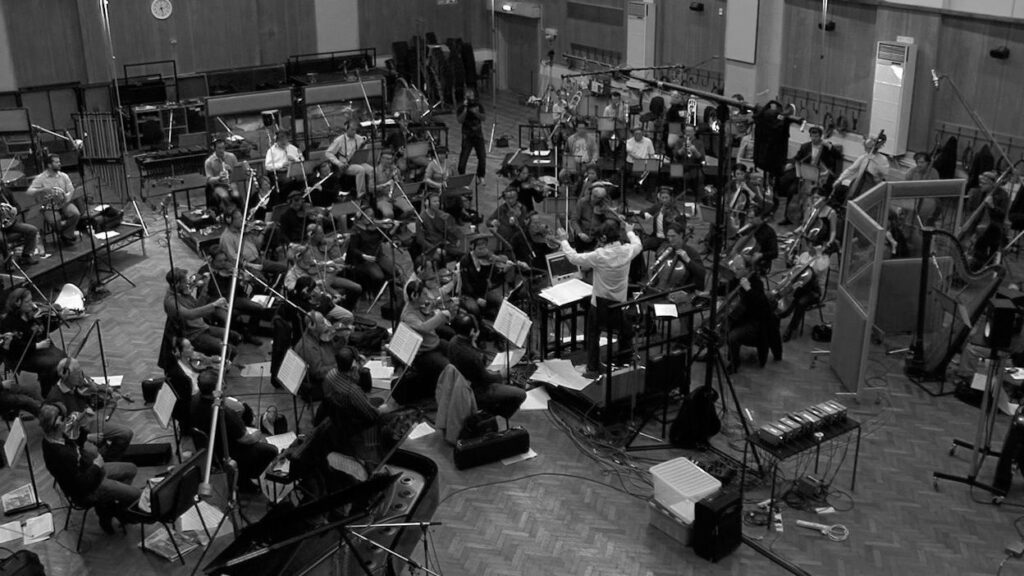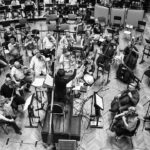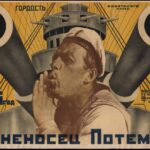Table of Contents
If you’re a cinema fanatic, chances are, you’ve been swept away by the magic of movie scores. Have you ever wondered about the evolution of film music? How it leaped from the restrained silence of black and white reels to booming Dolby surround sound? In this article, we will take you on an enthralling journey exploring the history and evolution of film music. By comparing the early days of silent films to modern movie scores, we’ll shed light on the development of this fascinating aspect of film.
Music expresses that which cannot be put into words and that which cannot remain silent
Victor Hugo

What is considered film music
Film music refers to the musical compositions specifically created and synchronized with motion pictures. It encompasses a wide range of genres and styles, designed to enhance the cinematic experience and evoke emotions in the audience. From the early days of silent films to the present, film music has evolved from simple piano accompaniments to complex orchestral scores, utilizing various instruments and innovative techniques. Today, film music plays a crucial role in setting the mood, creating tension, and immersing viewers into the world of cinema.
From the terrifying sharks’ theme in Jaws to the heartbreaking violin score of Schindler’s List, film music has always played a pivotal role in enhancing storytelling, character development, and atmosphere. Let’s delve into its history and gain understanding of how film music has evolved over time, manipulating our emotions and guiding our cinematic experiences.
A History of Music with Film
- Silent Era: Movies were not always blessed with the luxury of sound. Remember, every journey starts with a single step.
- The Jazz Singer: Captivating viewers with its synchronized soundtrack, this movie altered the course of cinema forever.
- The Rise of Orchestra: An increase in film budgets led to grandeur orchestras, paving the way for legendary composers to make their mark.
- Film Scores Today: With technological advancements, film scores have broadened their scope, experimenting with genre-crossing soundscapes and merging traditional with the contemporary.
Indeed, the evolution of film music mirrors the evolution of film itself, bearing witness to the changes in technology, narrative storytelling, and viewer tastes. We hope this cinematic journey through time unearths as much excitement for you as the opening sequence of a much-anticipated blockbuster.
The Birth of Film Scores: Silent Era Soundtracks
Delving into the origins of film scores, you’d find yourself back in the realm of silent films. When films were first born, they were wordless, with only text frames and dramatic, exaggerated acting to convey the narrative. But humans long for multi-sensory experiences, and the silent film was soon accompanied by music, performed live by everything from a solo pianist to an orchestral ensemble depending on the theatre’s resources.
In the 1920s, over 20,000 movie theaters in the U.S. had organs to accompany silent films.
What’s fascinating to consider is the role the live musicians would play. They didn’t just provide background music; they were effectively the film’s soundtrack, guiding emotional responses and providing audible cues for dramatic shifts. In a sense, they were the precursors to what would eventually become the modern film score composers.
- Solo pianists made use of popular songs of the time, drawing from a vast repertoire of classical and contemporary pieces to support the narrative of the film.
- Orchestras were typically utilized in larger theaters, adding a level of prestige and richness to the viewing experience. This was especially true during the premieres of major films.
Unfortunately, no notation or specific guide for live music during silent films remains intact, as it was purely an on-the-spot improvisatory act. The nuances of this performance art became the foundation of sound-to-image relationship, which we today recognize as a major element in film scoring.
The Transition to Sound Film Scores: The Jazz Singer
As the technical abilities of the film industry grew, a seismic shift was on the horizon. In 1927, The Jazz Singer became the first feature-length film that included synchronized dialogue and, indeedh, a complete musical score. This was the birth of the “talkies” and, with it, the formal inception of film scores. Silent films with live music performances became a thing of the past.
The revolutionary part about The Jazz Singer wasn’t just inclusion the of sound but the strategic utilization of it. It showed that music could be more than just a background component — it could tell a story in its own right, complementing and enhancing the visuals and dialogue. This set a precedent for all the film scores that were soon to follow.
Thus, from the seeds sown during the silent film era, the art form of film scoring was birthed. And from this point forward, film music would never be the same, constantly evolving and stretching the boundaries of storytelling through sound. Our cinematic journeys are now deeply enriched by the power of a cleverly composed, emotionally directed score, something we owe in large part to these early experiments with live music in silent films.
Orchestral Outpourings: The Introduction of Symphonic Film Scores
In the 1930s, the world of film music took a drastic turn. The arrival of symphonic film scores, a game-changer in the industry, transformed the way audiences experience movies – and we bet the trip to the movie theater hasn’t been the same for you since.

Symphonic film scores are essentially soundtracks created by an entire symphony orchestra, offering rich, layered musical compositions. Back in the day, this was a revolutionary development and breathed fresh life into cinematic storytelling.
Pioneering Film Music Composers
The driving force behind this orchestral outpouring? None other than Max Steiner, often hailed as the Father of Film Music. Having scored over 300 films in his career, Steiner introduced the concept of leitmotif – a recurring musical theme associated with particular characters or ideas – in film scoring. His impactful score for King Kong (1933) is often regarded as the first comprehensive symphonic film score, elevating the on-screen drama to soaring new heights and uncharted emotional depths.
It’s not just about the music. It’s about how the music interacts with the visuals.
Hans Zimmer
By establishing a strong emotional connection between the audience and the film, music became an integral part of the storytelling process. This was a far cry from the minimal sound accompaniments of the silent film era, marking a pivotal moment in the evolution of film music.
The Golden Age of Hollywood
Others followed in Steiner’s footsteps. Renowned composers like Bernard Herrmann, Miklós Rózsa, and Erich Wolfgang Korngold joined the bandwagon, leaving their distinctive marks on the emerging symphony orchestra landscape in Hollywood.
| Composer | Notable Films |
|---|---|
| Max Steiner | King Kong, Gone with the Wind, Casablanca |
| Bernard Herrmann | Psycho, Vertigo, North by Northwest |
| Miklós Rózsa | Spellbound, Ben-Hur, El Cid |
| Erich Wolfgang Korngold | The Adventures of Robin Hood, The Sea Hawk |
This era of orchestral ostentation was a significant chapter in the history of film music, signaling the transition from silent films’ simple piano accompaniments to the full-bodied sound of symphony orchestras. It also sowed the seeds for the rise of more specialized genres of film music, like science fiction and fantasy scoring, in the decades to follow.
Erich Korngold on music in film
I feel that music on the screen can seek out and intensify the inner thoughts of the characters. It can invest a scene with terror, grandeur, gaiety, or misery. It can propel narrative swiftly forward, or slow it down. It often lifts mere dialogue into the realm of poetry. Finally, it is the communicating link between the screen and the audience, reaching out and enveloping all into one single experience.
Erich Wolfgang Korngold
Modern Movie Scores: A Symphony of Sight and Sound
Today, film scores have reached unprecedented levels of complexity and artistry. From Hans Zimmer’s thrilling orchestrations to John Williams’ iconic themes, modern movie scores are an essential part of the cinematic experience. They’re designed not only to amplify the emotional resonance of a scene but also to contribute to the story’s momentum, often intertwining with the narrative in a fundamental way.
Music and cinema fit together naturally. Because there’s a kind of intrinsic musicality to the way moving images work when they’re put together. It’s been said that cinema and music are very close as art forms, and I think that’s true.
Martin Scorsese
The Evolution of Modern Film Scores
Starting in the mid-20th century, composers began experimenting with new technologies and musical styles to create more diverse and complex film scores. Electronic instruments, synthesizers, and computer-generated sounds became an essential part of the composer’s toolkit. But it isn’t just about the technology. There’s also an emphasis on thematic development, leitmotifs, and character themes, things that give the score a purpose beyond just setting the mood.
- Jazz influences: Beginning in the 1960s, jazz started influencing film scores, introducing a more experimental, freeform style. Notable composers who incorporated jazz into their scores include Elmer Bernstein (The Man With The Golden Arm) and Henry Mancini (The Pink Panther).
- Electronic experimentation: The 70s and 80s saw a surge in electronic music, with composers like Vangelis (Blade Runner) and Giorgio Moroder (Scarface) incorporating synthesizers and other electronic instruments into their scores.
- World music incorporation: In recent years, composers have been increasingly referencing world music, adding unique cultural elements to their scores. An example of this is Hans Zimmer’s score for The Lion King, which features African instrumentation and vocal styles.
This evolution doesn’t mean that traditional orchestral scores have totally disappeared. They’re still a beloved part of cinema, as evidenced by the success of composers like John Williams (Star Wars, Harry Potter) and Howard Shore (The Lord of the Rings). Indeed, the past few decades have seen a blend of traditional and innovative elements, creating a diverse sonic landscape in film.
The Impact of Technology on Film Scores
Technology has had a substantial impact on film music, shaping the way scores are constructed and perceived. Digital technology has expanded the sonic palette available to composers, allowing for a greater range of textures and tones. Composers can now simulate entire orchestras on their computers, create entirely new sounds, or manipulate traditional instruments in ways that wouldn’t have been possible in a live recording situation. This has led to an explosion of creativity in film scoring, with composers pushing the boundaries of what’s possible in music.
Now, as we venture further into the 21st century, film scores continue to evolve, reflecting our changing times and tastes. They’ll no doubt continue to surprise and inspire us, all while carrying on film’s time-honored tradition of weaving sound and image into one captivating storytelling experience.
The Future of Film Music: A Look Ahead
As we wrap up our journey through the evolution of film scores, it’s time to gaze forward. What cosmic melodies might future film scores have in store for us? The beauty of this field is the boundless creative potential that awaits future composers and directors. So let’s take a speculative leap into what might lie just beyond the horizon.
The music is not just an accompaniment but part of the storytelling. In a sense, I’ve always felt that movie music is like opera. The music is a very integral part of the narrative.
George Lucas
As technology continues to revolutionize every aspect of our lives, it’s undeniable that it will greatly impact the future of film music. Imagine a world where Artificial Intelligence (AI) creates a customized score in real-time, perfectly matching the emotional intensity of every scene. This isn’t just some distant pipe dream – AI is already starting to make a mark in the world of film music.
Then, we have the growing immersive technology, like virtual reality (VR), that promises a new layer of depth to film scores. While traditional film scores enhance the viewer’s emotional experience, music in VR environments can manipulate the perceived space, guiding the user’s attention and enhancing immersion.
However, despite these technological advancements, nothing will ever replace the emotional depth, complexity, and authenticity that a human composer brings to a film score. After all, film music isn’t just about providing background noise, it’s about capturing and conveying human emotions – a realm where we truly surpass machines.
In conclusion, the future of film music is exciting. With the emergence of AI, the rise of immersive technology, and the continued importance of human creativity, it’s clear that this arena is set up for a revolutionary upheaval. The coming decades promise an innovative blend of technology and human emotion, creating a unique sensory film experience that audiences have yet to feel.
The right sound can make or break a film.
Quentin Tarantino


